Water by their nature is mysterious and spooky. Here is a list of- 16 Mysterious water bodies of the world with some of the places on this list, but we’ve also got tales of unique species, paranormal rivers full of mythical monsters, and weird hobbit creatures living in.
So let’s begin our list of 16 mysterious water bodies of the world.
The Devil’s Sea
Strange Mysteries is far too cool to do an entry on Bermuda Triangle, so let’s instead take a look at its Pacific Ocean equivalent – The Devil’s Sea. Also known as the Dragon’s Triangle, this area of water off the coast of Japan has claimed several ships and hundreds of lives over the past century, including a research vessel sent out by the Japanese government to explore the phenomenon in 1952. Japanese fishermen won’t go anywhere near this area, and if you’re thinking this fear is a recent development. The legendary conqueror Kublai Khan once reportedly lost 40,000 men while trying to navigate the Devil’s Sea, and records from both ancient times and the modern-day include tales of magnetic anomalies, disappearing vessels and strange flashing skylights. What is it with the flashing lights everywhere?
Want more on the Bermuda Triangle? Follow this link.
Cenotes of Mexico’s Yucatan peninsula
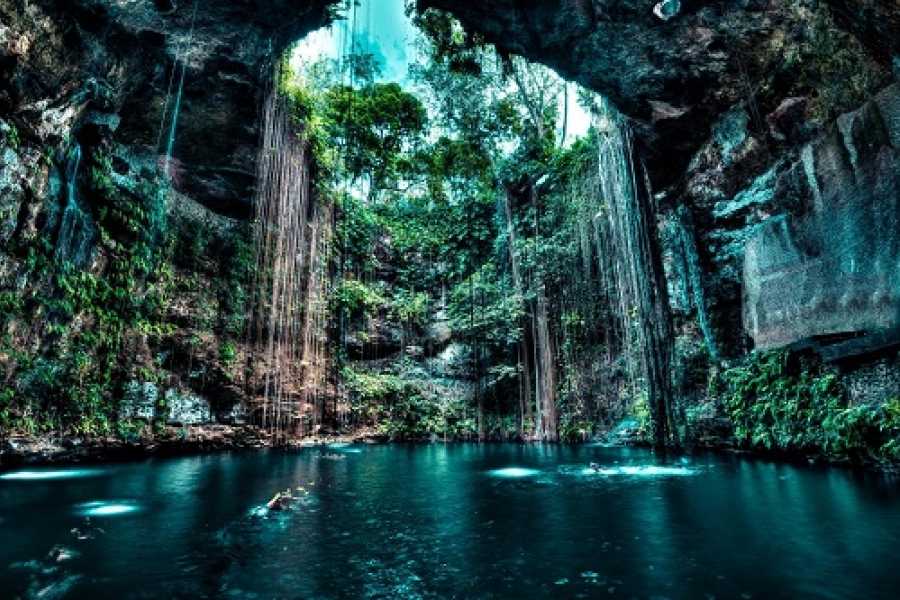
Thousands of deep sinkholes were created in Mexico by collapsed limestone bedrock and form part of the longest underwater cave system in the world. Although located across the entire peninsula, there is a high density of cenotes found around the rim of the Chicxulub crater, created by an asteroid or comet 66 million years ago if it is thought to have caused the extinction of the dinosaurs. The caves and cenotes are flooded with freshwater overlying saltwater, which seeps in via connections to the sea. The cenotes found on the Mexican peninsula have always had an air of mystery – the Maya used to believe they were the entrance to the afterlife and considered them sacred. Many remain unexplored, however, divers have begun to map the subterranean bodies of water, swimming lengths of up to 60 miles.
Lake Anjikuni
Anjikuni Lake is located in the Kivalliq Region of Nunavut, Canada, and it’s near here in 1930 that an entire village of Inuits disappeared seemingly overnight. The village consisted of somewhere between 30 to 2000 people, which is a pretty broad estimate if you ask me. But when local trapper Joe Labelle wandered through in November 1930, he found not one single soul. Scattered food and weaponry indicated a large number of people had been there not long ago, but nobody was around to explain what had happened, and the village’s Inuit inhabitants were never seen again. The mystery deepens when you find out that several graves in the nearby burial ground had been recently disturbed, that a pack of sled dogs starved to death just outside the village, and other people from nearby villages reported seeing strange lights in the sky above Lake Anjikuni around the same time as the Inuits disappeared.
Where did they go? What were those lights? And what would anyone want with the contents of an Eskimo grave?
The Mariana Trench
The Mariana Trench one of the most famous water bodies of the world is the deepest part of the Earth’s ocean. It stretches over 2,550 kilometers and sinking an astonishing eleven kilometers into the Earth’s crust. Found at the bottom of the Western Pacific Ocean to the east of the Mariana Islands, this place is so deep that only four descents have ever been achieved, with two of them manned and one of these a solo visit made by Avatar and Titanic director James Cameron. Because of the paucity of visits we know very little about what exists at its bottom.
Well, that’s not true, as just a few months ago we realized we’d accidentally dumped a bunch of garbage down there without knowing. And it’ll be just our luck if the stray rings from a six-pack strangled the last surviving fish with cancer-curing blood. But if truth be told, there could be plenty of crazy creatures down at the bottom of the Mariana Trench waiting to be discovered by marine biologists and Steven Spielberg probably. But the few things we have already observed down there are pretty amazing, as they include giant amoebas that are immune to most toxins, a bizarre new species of orb-like jellyfish, another new species nicknamed the ghost fish, an under-ocean lake of liquid sulfur, and hot vents spewing water and liquid carbon dioxide, around which new and exciting life-forms may have developed. There’s also the possibility that the Mariana Trench is home to sea creatures several orders of magnitude larger than anything we’ve ever seen. Evidence in the form of scars on Killer Whales indicates that colossal Giant Squid lurks somewhere in the ocean.
Are you having fun with our list of spooky water bodies of the world?
The Thames
There can be no doubt that London’s River Thames contains a fair few secrets beneath its waters, as at 346 kilometers long there’s plenty of room for artifacts and evidence to become lost in the murky depths. London itself is nearly 2,000 years old after being founded by the Romans, and human settlements have been established in this area for even longer, so who knows what treasures and terrors may have accumulated over two millennia in the Thames?
Unexploded World War 2 bombs, an iron ball, and chain and an old Roman sex token are just some of the strange things that have washed ashore, but the two most common items which turn up are Victorian garbage and body parts. Human remains to wash up from the Thames at least once every week, with 2011’s Voodoo Torso story proving particularly unsettling. It was later discovered that this headless, limbless body belonged to a five-year-old boy killed in a Voodoo ritual, and when this isn’t the most famous torso-based mystery your river has to offer, you know you’re dealing with a pretty mysterious place. That particular honor goes to the notorious Jack the Ripper, who is considered the prime suspect for the Thames Torso murders of 1887 to 1889. For two years, body parts belonging to multiple women were found floating in the Thames, and with these cases overlapping with the deaths of Jack the Ripper’s five confirmed victims, you have to wonder if the Thames contains any more cadavers courtesy of the elusive Victorian throat-opener and indeed, if it contains any clues to his identity as well.
The Palawan Island River
The Philippine Island of Palawan is a stunning tropical island full of mysterious life that until recently was previously unknown to mankind. One of the most shocking discoveries here was Nepenthes Attenborough; a carnivorous plant thought to consume rodents and small monkeys unlucky enough to fall inside it. The plant was named after David Attenborough who has a keen interest in the species, with evidence of his rodent and monkey consumption limited to the Planet Earth blooper reel. And this place gets even more fascinating when you find out it’s also home to one of the world’s longest underground river systems.
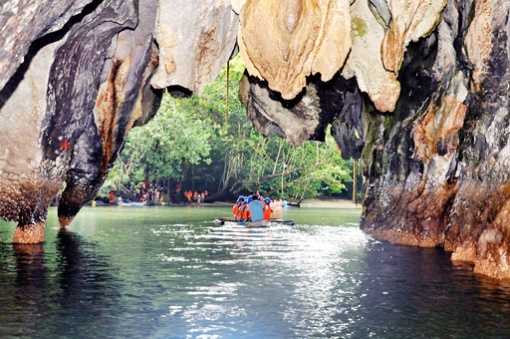
The Cabayugan River is part of a vast subterranean cave system over 24 kilometers in length, with the river itself running 8 kilometers through a series of underground chambers. This subterranean river was considered a mystical place for the island’s native people, with locals telling tales of huge aquatic beasts, gargantuan lizards, and dwarf-like humanoids who called the cave their home. It’s certainly true that unique species have been found in this river and its surrounding areas, with many more thought to exist further inside. There have also been a few strange sightings of animals and remains of animals which technically shouldn’t exist here, so could there be any truth to those sensational claims by the locals? I mean, if flesh-eating plants live on this island, pretty much anything goes, right? Easily one of the Spookiest water bodies of the world.
Ross Sea Ice Shelf
A few intrepid research teams have drilled hundreds of meters through the world’s largest ice shelf and found a mysterious collection of species living underneath, including fish and crustaceans. The group of scientists was testing an underwater robot when they stumbled across never before seen sea anemones and peculiar upside-down swimming fish.
No one yet knows how they got there or how they survive such extreme conditions, however, these elusive creatures may have considerable implications for astrobiology, as scientists think that the Antarctic ice shelf has similar conditions to Europa, one of Jupiter’s moons, indicating extra-terrestrial life may be able to survive in such a frosty environment. Although very little is known about these elusive sea creatures, the researchers are hoping to return to the ice shelf with a redesigned robot to study them further.
Gakkel Ridge
The Gakkel Ridge, in the Arctic Ocean between Greenland and Siberia Running between Greenland and Siberia, the Gakkel Ridge is the deepest mid-ocean ridge in the world, reaching depths of up to three miles. It’s no surprise then that the darkest corners of the Gakkel Ridge remain largely unexplored. Despite this, the underwater mountain chain is where scientists found the first Arctic hydrothermal vents, only in 2003.
Hydrothermal vents are a hot-spot for sea organisms, with up to 100,000 times higher density of organisms than the surrounding ocean, and with those in the Gakkel ridge being so isolated from other oceans, these vents are likely to contain species found nowhere else on the planet. In 2007 researchers conducted the AGAVE (Arctic Gakkel Vents Expedition) mission, in which they discovered large amounts of pyroclastic volcanic deposits, which appear as glass-like structures on the seafloor. The group used an underwater robot to explore the area and found “mats” of large amounts of microbial life.
Lake Vostok
Lake Vostok is one of the largest lakes in the world. But it’s not its size that makes it one of the impressive water bodies of the world. It’s the fact that four kilometers down, beneath a layer of ice, this freshwater lake has remained sealed off from the rest of the world for over 15 million years until some Russians punched a hole in it. Vostok is a subglacial lake that exists beneath the East Antarctic Ice Sheet, and until Russian scientists explored it via a borehole in 2012, the lake and its inhabitants had existed inside a completely separate world to our own since the Miocene Epoch. Further exploration of this isolated environment could give us clues as to the conditions we might find inside the ice-capped oceans of Saturn’s moon, Enceladus and Jupiter’s Moon, Europa, but first, we’re going to deal with the news that there are thousands of new species living down here that we’ve never met before. Samples taken from the lake contained the DNA of over 3,500 recognized species and more than 10,000 species that were entirely new to us, with potentially new creatures, viruses, and bacteria all lurking down there ready to be discovered…and maybe destroy mankind, we’ll have to wait and see.
Champagne seeps on the Cascadia margin
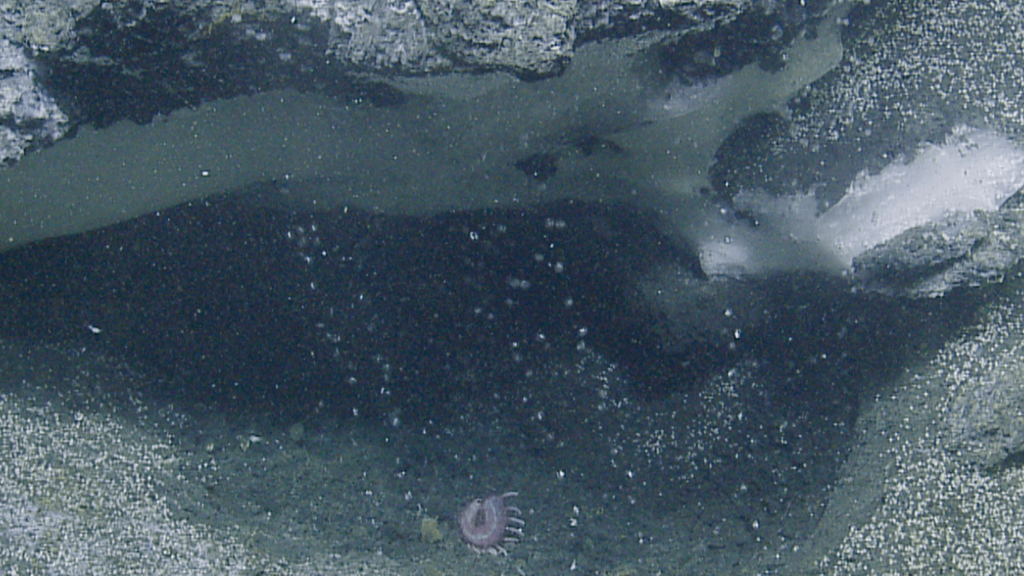
In many places, methane escapes through cracks in the seafloor known as cold seeps. Confusingly, the temperature at cold seeps tends to be slightly warmer than the surrounding ocean, and because of this, the seeps are host to a whole biome of species.
Recently the Ocean Exploration Trust found 500 of these cold seeps off the US West Coast, on the Cascadia margin, where methane fizzes up like champagne. Little-known animals thrive there like mussels with bacteria in their gills that harness energy from the bubbling methane. It’s still a mystery as to where the methane originates, but it’s postulated that it is produced by geological activity beneath the Pacific Ocean. Another unknown is what effect the escaping methane will have on atmospheric methane concentrations, and the environment in general, as methane is a greenhouse gas.
Greenland coral reefs
Coral from the newly discovered reef off Greenland In 2012, researchers stumbled across a deep coral reef while taking water samples 900m down off Cape Desolation on Greenland’s southern coast. The crew first realized there was a reef beneath them when they lowered their equipment into the depths and it was smashed by the coral. Initially angered by the destruction of their equipment, the team soon became excited when they realized what lay beneath them.
Virtually nothing is known about the Greenland reef, however similar cold-water reefs in Norway are 8,000 years old. Unlike coral found in tropical waters, cold-water reefs are capable of thriving in water with a temperature as low as 4 degrees Celsius and total darkness. This is because, unlike their tropical relatives, cold-water corals do not rely on sunlight for energy, instead of feeding on zooplankton that is brought to the reef by ocean currents. Due to the depth at which they are found, much mystery still surrounds cold-water reefs and the animals that inhabit them.
Horizon Deep in the Tonga Trench
After the Mariana Trench, the second deepest place on Earth (only 150m shallower) is likely to be home to a host of strange hadal zone creatures, such as jellyfish and sea cucumbers. The Tonga Trench lies between the Pacific Plate and the Indo-Australian Plate, in the South Pacific Ocean, and is over 10km deep at some points.
Silfra fissure
Located in the middle of Iceland, this is the only place where you can swim in the crack between two continents. It is here that the Eurasian and North American plates meet, creating a crevice with a depth of up to 63 meters. Its fissure gets 2cm wider every year, building tension between the plates and the Earth, which is released by earthquakes.
The freshwater is claimed to be the ‘clearest water on Earth’, with visibility up to 100m, and as a consequence, the fissure is a popular snorkeling and diving location – despite the water temperature reaching as low as two degrees Celsius. The water within the fissure is particularly clean as the glacial water has been filtered through porous rock, clean enough to drink as you dive in fact.
Point Pleasant
The Silver Bridge was a road-bridge which once straddled the Ohio River at Point Pleasant, connecting the states of West Virginia and Ohio. But on December 15th in 1967 the Silver Bridge collapsed, killing 46 people in the process. And while this incident was, of course, tragic, an unexpected consequence was that it brought the end of an even more horrifying event – The Mothman visits. The Mothman was said to be some kind of creature which was seven-foot-tall, barrel-chested, and had glowing red eyes and ten-foot wings. Hundreds of West Virginia residents claimed to have seen the Mothman between 1966 and 1967, but spookily these hauntings stopped as soon as the Silver Bridge collapsed. So was the Mothman a real creature? Was it home somewhere in the Ohio River? Perhaps directly underneath the Silver Bridge? Who knows? The mystery of such water bodies of the world is still unsolved.
But the area of Point Pleasant where the Ohio and Kanawha Rivers meet is a notoriously popular place for paranormal rumors. UFO’s, ghosts, strange creatures and Government men in black have all been sighted in this region, so is there anything else lurking in this river that we should know about? Or was the Mothman it, and did the Silver Bridge tragedy put an end to this mysterious creature’s life?
Von Damm Vent Field
These peculiar hydrothermal vents made from talc (magnesium silicate, as found in baby powder) were discovered in 2010, and tower as high as 75m from the seafloor. Hydrothermal vents are usually made of sulfite compounds. The Von Damm Vent Field is part of the mid-ocean ridge system within the Caribbean Sea, of which 75 percent is still yet to be explored – what other mysteries could still be uncovered here?
Vent fauna is diverse and abundant, and 500 new animal species have already been discovered at hydrothermal vents within the mid-ocean ridge system. Huge numbers of shrimp flock to the talc mounds as minerals are fired out of the hydrothermal vents. The water from the vents can reach up to 200 degrees Celsius and the vent field transfers 500 megawatts of energy into the surrounding sea.
Twilight zone reefs in the Chagos Islands
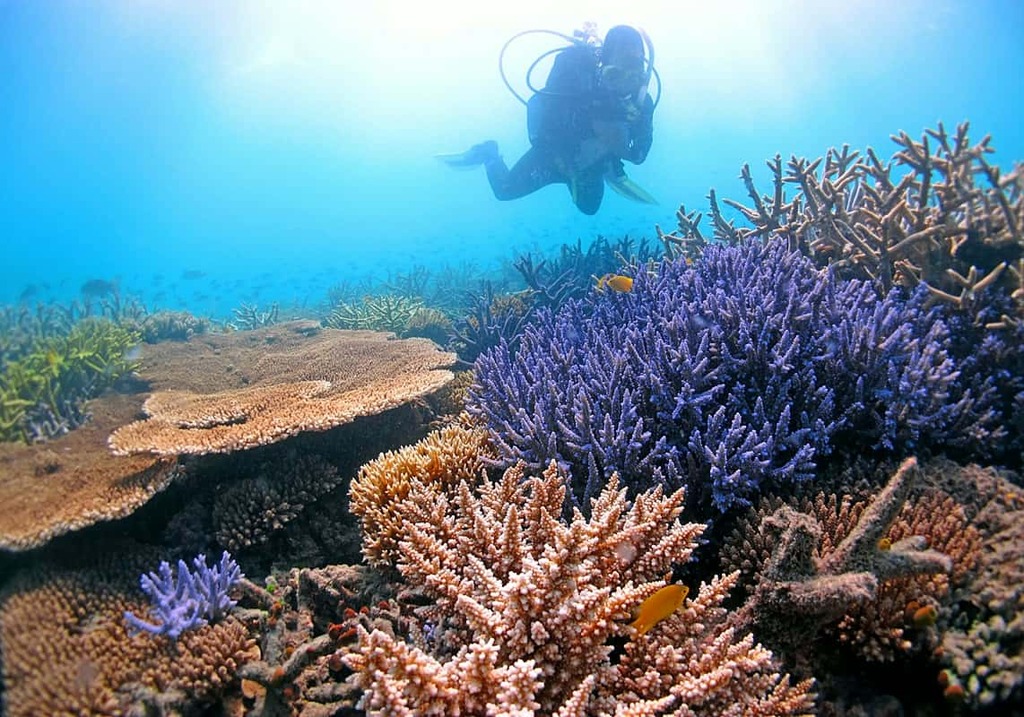
Very few of the world’s coral reefs have been studied deeper than 40m, in the part of the ocean known as the twilight zone. The mesophotic coral habitats found here are adapted to very low light levels, and although many of the coral species found in the twilight zone can also be found in shallower waters, many have distinctive shapes more suited to the lack of light.
In the remote central Indian Ocean, healthy deep reefs in the Chagos Islands could help shallower areas recover from the mass coral bleaching of 2016. Bleaching occurs when a coral becomes stressed by its environment, for example, due to a change in temperature through climate change. Although the bleached coral is not dead, it is at a higher risk of being damaged. Shallow-water coral reefs are more susceptible to bleaching due to exposure to the Sun, and twilight zone reefs provide a refuge for shallower species that may be threatened. Exploration of the area is limited by the remoteness of the islands, and until only recently dives were restricted to 25m, therefore much remains unknown about the mesophotic reefs.
Didn’t I start with, Water bodies of the world are mysterious and spooky? Now, do you believe it? or not. If not, below is the com box, feel free to fill in with your thoughts. Stay tuned. See Ya all.
References- science focus
Also read– Top 12 Amazing Facts of World

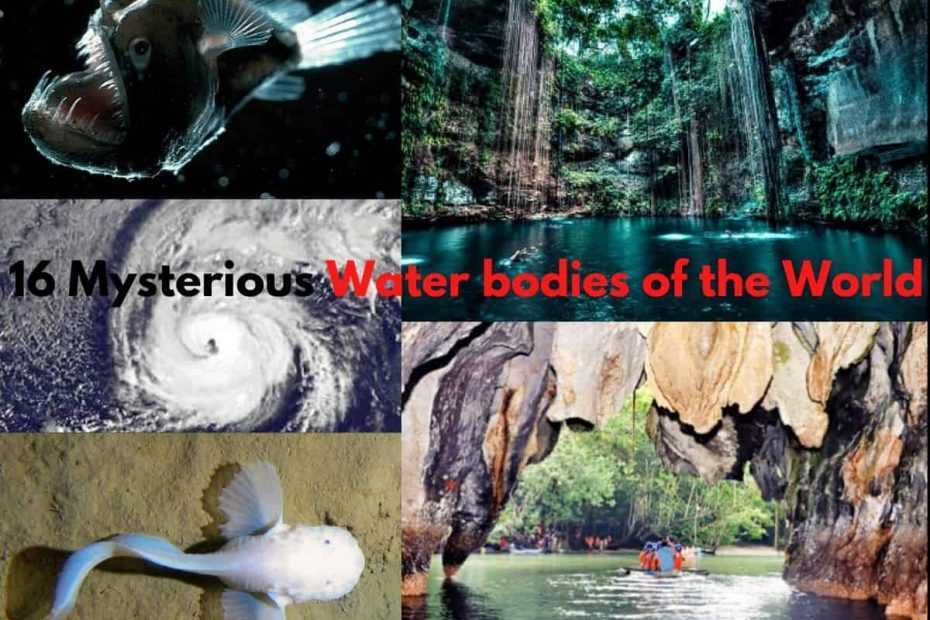


Awesome post.
fun fact – I am in love with the name Vostok.. 🤣
Thank you!
amazing post! but, what about Atlantis?
Thank you!
Atlantis is more of a myth.
great content.
thanks Abigail…
Luna, or more specifically Luna 073, is the only clone who has survived the experimentation process. Unlike her 72 predecessors (yes, the Balhae team killed 72 kids before getting it right), Luna is not only able to survive exposure to the lunar water, but is changed by it. She becomes super fast and strong, is able to heal her own wounds when exposed to lunar water, and her body produces antibodies that can make other humans able to consume lunar water themselves. (Dr. Song is able to survive exposure to lunar water after sustaining a bite from Luna.)
would have been better if you attached the article-specific link instead of a home URL…